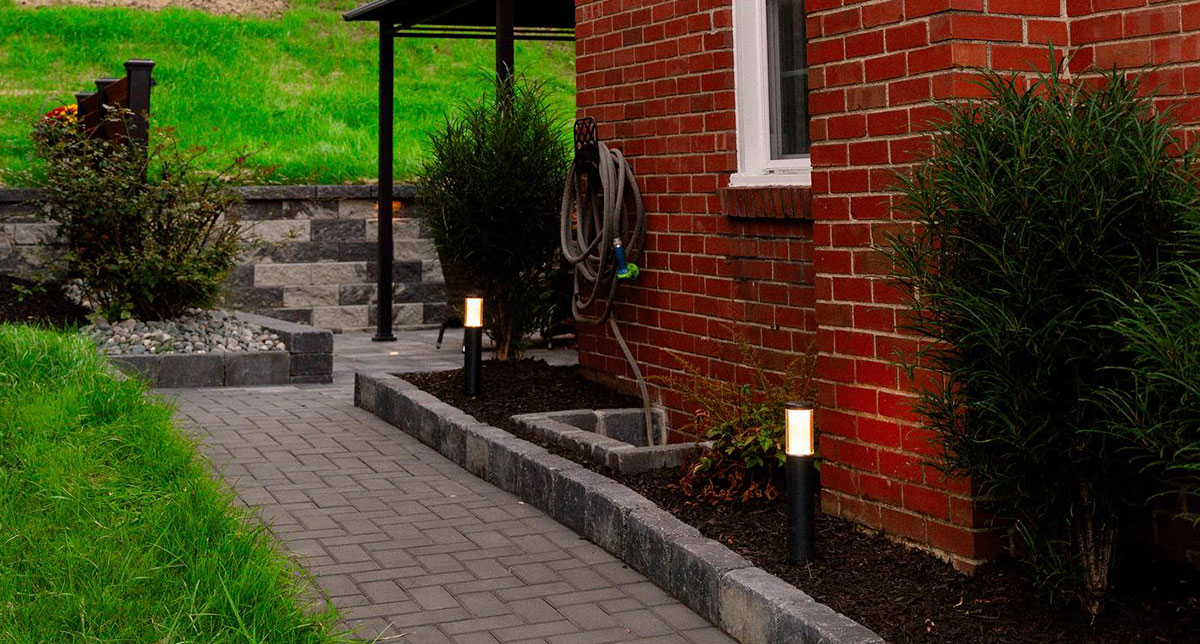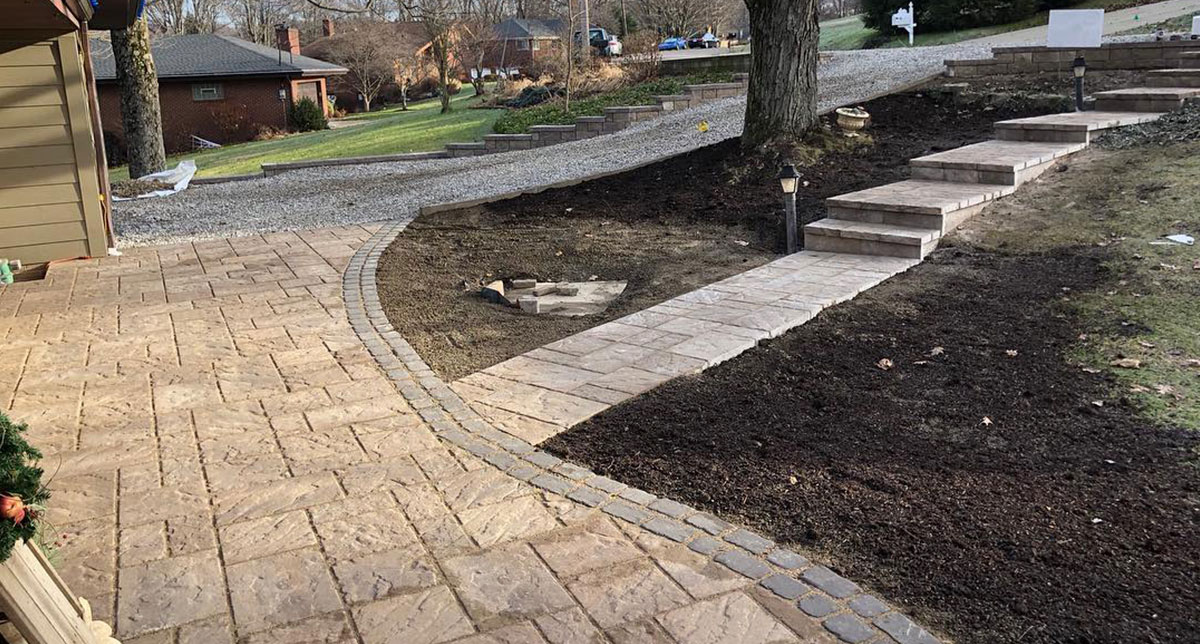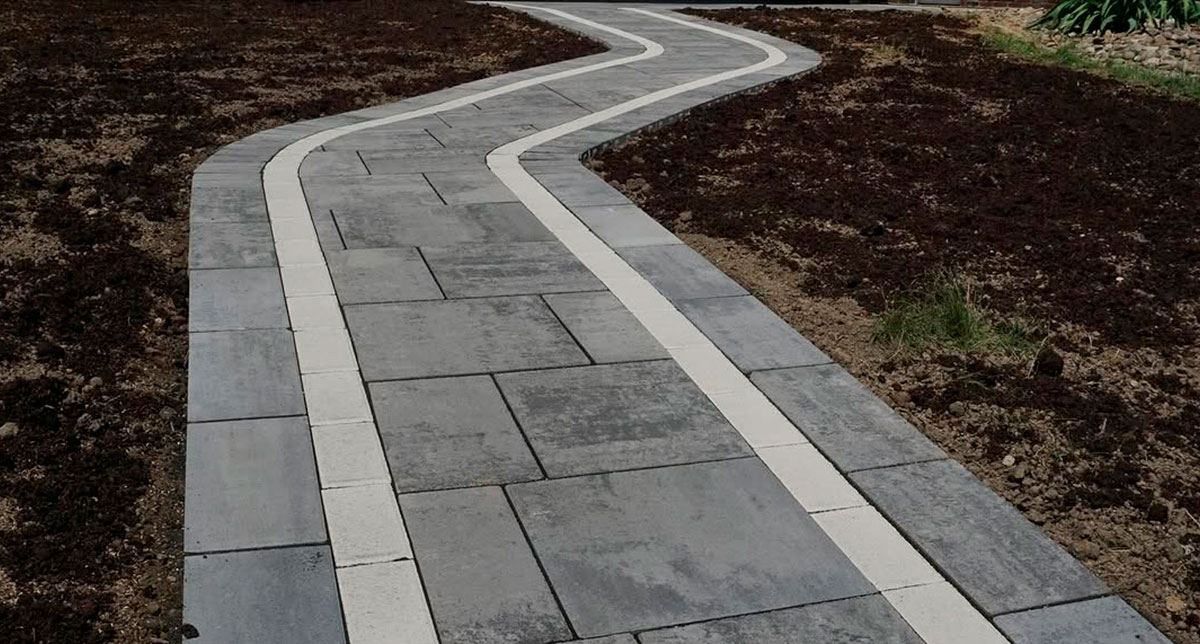A well-designed yard is about more than just green grass and pretty flowers. Adding a paver walkway is one of the simplest ways to bring structure, beauty, and purpose to your outdoor area. Paver walkways introduce visual harmony and charm to your yard, turning everyday movement into a beautiful experience and boosting the overall appeal of your property.
What Is a Paver Walkway?
A paver walkway is a path made from individual paving stones, typically from concrete, brick, or natural stone. These stones are installed in a specific pattern or design to create a well-built, level walking surface. Because pavers come in a wide variety of shapes, sizes, textures, and colors, the possibilities are endless when it comes to design. From a modern path to a rustic garden trail, a paver walkway can match any style.
Why Paver Walkways Stand Out
Paver walkways are a popular choice among homeowners and landscaping experts for a good reason: they offer a perfect mixture of durability, visual appeal, and practical function. First, they’re incredibly durable. Unlike poured concrete, which can crack over time due to temperature changes, pavers are set individually, so they’re more flexible and less prone to damage. If one does get stained, it’s easy to replace it without tearing up the entire walkway. Another benefit is drainage. Because pavers are installed with small gaps between each stone, water can drain more easily, reducing puddles and erosion. This makes paver walkways a smart choice for areas that get a lot of rain or snow. Secondly, there’s the visual appeal. A paver walkway brings a sophisticated look to your yard. It invites people to explore your landscape and creates a home in a welcoming way.
How Walkways Improve Outdoor Living
A paver walkway improves the functionality of your yard. Consider how challenging it can be to walk through your outdoor space after rain or when trying to move between different areas without stepping on grass or dirt. A properly designed walkway keeps your shoes clean, protects your landscaping, and allows you to get around your yard easily. Paver walkways also add structure, guiding you from one space to another and dividing large areas into more usable zones. A walkway can lead guests from the driveway to the front door or create a path from the patio to the garden. It can wrap around flower beds, outline a seating area, or connect your outdoor kitchen to the rest of your yard.

Planning Your Paver Walkway
Designing a walkway that’s both attractive and durable begins with careful planning. This involves considering how the path will be used, how it complements the rest of your landscape, and selecting materials that will resist the local climate.
- Start by mapping out the route. Consider the shortest and most natural path people will take. Then think about how wide the walkway should be. For a front path or main walkway, make sure it’s wide enough for two people to walk side by side.
- For a garden path, something narrower and winding might be more appropriate.
- Think about materials. Concrete pavers are cost-effective and available in many finishes. Brick has a warm, classic feel, while natural stone like bluestone or flagstone offers an organic, high-end look. Each material has its own maintenance needs and performance in different weather conditions
Installation Makes the Difference
While DIY kits are available, professional installation ensures your paver walkway is properly graded, leveled, and set for long-term durability. A professional team will prepare the base layer, install edging to keep the pavers in place, and use the correct jointing material for stability and weed resistance. Proper installation also prevents shifting over time. A walkway that’s uneven or poorly supported can become a dangerous risk or require constant maintenance. A good contractor will make sure the job is done right the first time, saving you time and money in the long run.

Why is a path walkway a great investment?
Adding a paver walkway doesn’t just make your yard more functional; it also adds value to your property. A beautifully designed walkway improves curb appeal, creates a sense of sophistication, and contributes to an outdoor environment that feels inviting. For homeowners thinking long-term, this kind of investment pays off. Not only will you enjoy the benefits now, but prospective buyers will also see the value in a well-designed, low-maintenance feature that complements the perfect home’s outdoor space.
Bringing It All Together
A paver walkway might seem like a small addition, but it has a big impact. It’s a feature that adds beauty, function, and makes walking through your yard easier and more enjoyable. Updating your front yard, finishing off a new patio, or improving your outdoor layout all make a walkway a smart, stylish choice. To make sure your walkway lives up to its potential, work with Cargan Outdoor Living, which understands design, materials, and installation inside and out. That way, your walkway will connect to your landscape.
Faqs
Why choose pavers instead of poured concrete?
Pavers offer more flexible design, better durability against cracking, and easier repairs. If a paver becomes damaged, it can be replaced individually without redoing the entire path, something impossible with poured concrete.
How long do paver walkways last?
When professionally installed and properly maintained, a paver walkway can last 30 years or more. The lifespan depends on the quality of materials, installation methods, and ongoing maintenance.
Are paver walkways low maintenance?
Yes. Routine maintenance includes occasional sweeping, removing weeds, and resealing every few years if needed. Because the pavers are tightly set, drainage is typically good, reducing long-term wear and tear.
Do I need professional installation for a paver walkway?
While some homeowners attempt DIY installations, a professional ensures the job is done right from the ground up. Proper excavation, base preparation, and leveling are key to preventing shifting, uneven surfaces, and long-term damage.
Can pavers handle difficult weather?
Yes. Pavers are designed to resist a wide range of weather conditions. Many are freeze-thaw resistant, making them a smart choice in areas with cold winters and seasonal shifts.
What are the benefits of installing paver walkways?
Paver walkways enhance both aesthetics and functionality. They provide a durable, non-slip surface, guide foot traffic, and protect surrounding landscaping from wear. With a variety of materials, colors, and patterns, paver walkways can complement your home’s exterior while adding long-lasting charm and practicality.
How do I choose the right materials for a walkway?
Walkway materials should match your style, climate, and maintenance preferences. Options like concrete pavers, natural stone, and brick offer durability and design flexibility. Consider color, texture, and shape to create a cohesive look with your landscaping while ensuring safe and long-lasting paths.
How do I maintain paver walkways over time?
Regular sweeping, occasional pressure washing, and resealing help maintain paver walkways. Inspect for uneven stones or cracks, replacing damaged pavers promptly. Proper maintenance preserves appearance, safety, and longevity, keeping walkways functional and visually appealing for years.

